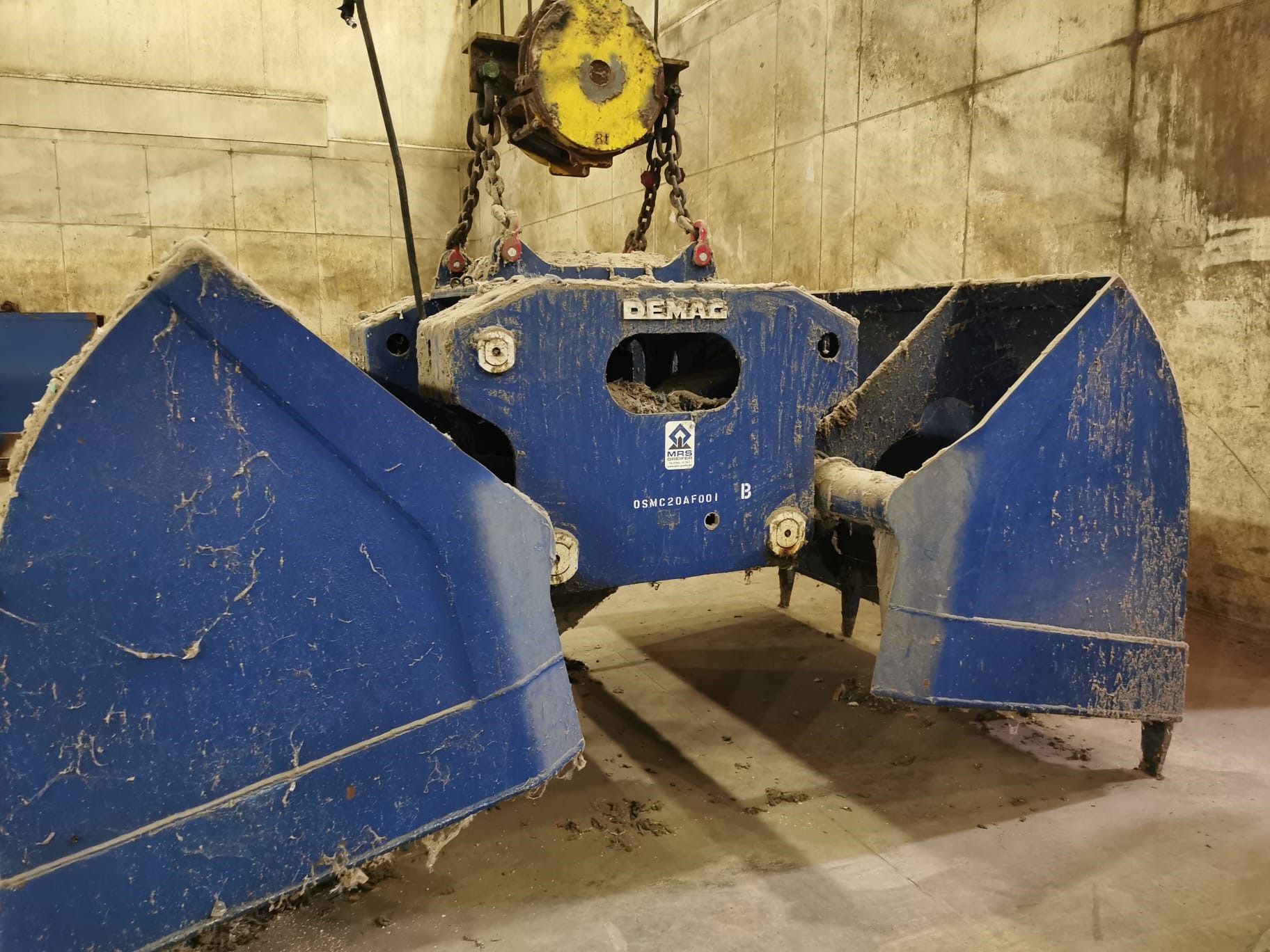Effective Hydraulic Fault Finding in Waste Grabs: Troubleshooting Tips and Techniques
Waste grabs are essential equipment in industries such as recycling, waste management, and construction, where they are used to handle heavy loads and materials efficiently. Central to the operation of these waste grabs is the hydraulic system, which provides the necessary force and control to operate the grab arms. However, hydraulic systems are complex and can be prone to faults that may result in operational downtime or even damage to the equipment. In this blog, we’ll explore effective techniques for hydraulic fault finding in waste grabs, offering practical troubleshooting tips to help maintenance teams in the UK keep their equipment running smoothly.
Understanding Hydraulic Systems in Waste Grabs
Hydraulic systems in waste grabs typically consist of several key components, including hydraulic pumps, cylinders, valves, hoses, and fluid reservoirs. These components work together to convert fluid power into mechanical force, allowing the grab arms to open, close, and manipulate loads. Given the heavy-duty nature of waste grab operations, these systems are often subjected to extreme pressures, high loads, and harsh working conditions, making them susceptible to a variety of faults.
Common issues in hydraulic systems can include leaks, pressure loss, slow or erratic operation, and complete failure of the system to function. Effective fault finding requires a systematic approach to identify the root cause of the problem and implement the appropriate solution.
Key Hydraulic Faults and Troubleshooting Techniques
-
Hydraulic Fluid Leaks
- Symptoms: Visible fluid on or around hydraulic components, loss of system pressure, or a drop in fluid levels in the reservoir.
- Causes: Leaks can be caused by worn seals, damaged hoses, loose fittings, or cracks in the hydraulic cylinders or reservoir.
- Troubleshooting:
- Inspect Seals and Connections: Start by visually inspecting all seals, hoses, and connections for signs of wear, cracks, or looseness. Tighten any loose connections and replace damaged seals or hoses.
- Check Cylinder Rods: Inspect the cylinder rods for scoring or damage, which can cause leaks around the seals. If the rods are damaged, they may need to be repaired or replaced.
- Monitor Fluid Levels: Regularly check the hydraulic fluid levels in the reservoir. A significant drop in fluid levels without an obvious external leak may indicate an internal leak within the system.
-
Pressure Loss or Low Hydraulic Pressure
- Symptoms: The waste grab may operate sluggishly, struggle to lift loads, or fail to maintain grip pressure.
- Causes: Common causes of pressure loss include a failing hydraulic pump, clogged filters, air in the system, or worn-out valves.
- Troubleshooting:
- Test the Hydraulic Pump: Use a pressure gauge to check the output pressure of the hydraulic pump. If the pressure is below the manufacturer’s specifications, the pump may need to be repaired or replaced.
- Check for Air in the System: Air can enter the hydraulic system through leaks or during fluid replacement. Bleed the system to remove any trapped air and restore proper pressure.
- Inspect Filters: Dirty or clogged hydraulic filters can restrict fluid flow and reduce pressure. Replace filters as needed and ensure they are installed correctly.
- Examine Valves: Worn or malfunctioning valves can lead to pressure loss. Inspect all valves for wear and ensure they are functioning properly. If necessary, replace faulty valves.
-
Slow or Erratic Operation
- Symptoms: The waste grab operates more slowly than usual, or the movement of the grab arms is jerky and unpredictable.
- Causes: This issue can be caused by insufficient hydraulic fluid, air in the system, or problems with the hydraulic pump or valves.
- Troubleshooting:
- Check Fluid Levels: Ensure that the hydraulic fluid reservoir is filled to the correct level. Low fluid levels can lead to insufficient pressure and slow operation.
- Bleed the System: If air is trapped in the hydraulic system, it can cause erratic operation. Bleed the system to remove air bubbles and restore smooth operation.
- Test the Pump and Valves: Conduct tests on the hydraulic pump and control valves to ensure they are operating correctly. Any worn or damaged components should be repaired or replaced.
-
Complete Hydraulic System Failure
- Symptoms: The waste grab fails to operate at all, with no movement from the grab arms.
- Causes: A complete failure could be due to a major issue such as a catastrophic pump failure, a blocked fluid line, or a severe electrical fault affecting the hydraulic controls.
- Troubleshooting:
- Inspect the Pump: If the hydraulic pump has failed, there will be no fluid flow, and the system will not operate. Test the pump and replace it if necessary.
- Check for Blockages: Inspect all fluid lines for blockages or severe restrictions. Clogged lines can prevent hydraulic fluid from reaching the cylinders, leading to a system failure.
- Examine Electrical Controls: If the waste grab uses an electrically-controlled hydraulic system, check the electrical connections, fuses, and control units for faults. Repair any damaged wiring or replace faulty control components.
Best Practices for Hydraulic System Maintenance
Preventative maintenance is key to reducing the frequency and severity of hydraulic faults in waste grabs. By following these best practices, maintenance teams can keep their hydraulic systems in top condition:
-
Regular Inspections:
- Conduct regular visual inspections of all hydraulic components, including hoses, seals, cylinders, and pumps. Look for signs of wear, leaks, or damage and address any issues immediately.
-
Fluid Maintenance:
- Regularly check and maintain hydraulic fluid levels, and replace the fluid at intervals recommended by the manufacturer. Always use the correct type and grade of hydraulic fluid for your system.
-
Filter Replacement:
- Replace hydraulic filters on a regular basis to prevent contamination and ensure proper fluid flow. Contaminated fluid can lead to premature wear and failure of hydraulic components.
-
Bleeding the System:
- After any maintenance work or fluid replacement, bleed the hydraulic system to remove any trapped air. This prevents erratic operation and ensures consistent pressure.
-
Training and Documentation:
- Ensure that all maintenance personnel are trained in hydraulic system troubleshooting and repair. Keep detailed records of all maintenance activities, including inspections, repairs, and fluid changes, to help identify recurring issues and inform future maintenance planning.
Conclusion
Effective hydraulic fault finding in waste grabs is essential for maintaining operational efficiency and preventing costly downtime. By following a systematic approach to troubleshooting and adhering to best practices in maintenance, UK maintenance teams can keep their hydraulic systems in top working order.
Whether dealing with leaks, pressure loss, or complete system failure, understanding the common faults and knowing how to address them can make all the difference. With regular maintenance and careful attention to detail, you can ensure that your waste grabs remain reliable and efficient, minimising disruptions to your operations and extending the lifespan of your equipment. For specialist advice and a no-obligation quotation, call IME on 02085996570 or email sales@imegroup.co.uk.

